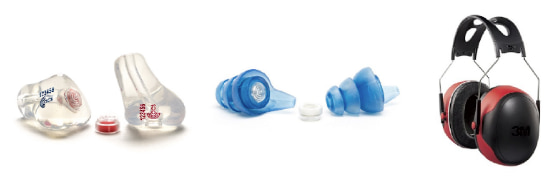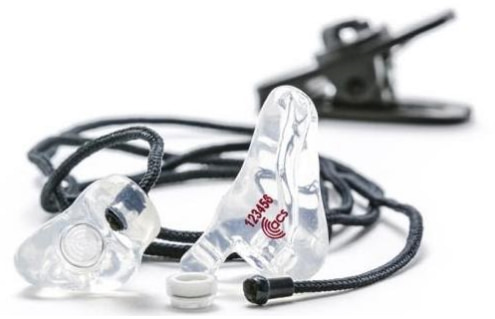ONE SIZE DOES NOT FIT ALL: Are you using the right hearing protection?
Did you know that most Noise Induced Hearing Loss (NIHL) is being caused in the workplace. NIHL is the only type of hearing loss that is completely preventable if you take the right measures and use the right hearing protection.
In order to limit hearing damage, the employer is responsible to take all measures available to reduce noise but is also responsible for providing proper hearing protectors and to oversee the (proper) use of these.

Understanding Noise
To choose proper hearing protection we need to start looking at three things first: noise levels, noise frequencies and attenuation.
Noise Levels – How loud is that sound?
At an average of 85db over an 8-hour workday people are generally safe from hearing damage. However, the higher the noise level or the longer the exposure, the more chance of hearing damage. A sudden intense “impulse” noise can also change these numbers.
Every increment of 3db above 85 however, halves the safe exposure time. It is good to realise that a 6db increase above 85db does lead to 2-hour safe exposure time only (half of half) and so on. It is not a linear scale but an exponential scale.

As a matter of comparison, firearms work around 140db, a factory or chainsaw around 100db, a jackhammer around 130db. Without proper protection working in a factory (as in our example) would only be safe for 15 minutes per day. All noise after that that exceeds 85db, is damaging.
For those interested, have a play with our Safe Exposure Time Calculator.
Frequency Levels – What type of noise? Highs and Lows
The second important part about noise is that all noise is different, have different frequencies. A train engine sounds different from a siren. This is caused by different frequencies.
All hearing protectors have different protective abilities, protect different frequencies, if you please. A protector that attenuates (protects) against high frequency noises mostly, will not be seen as proper protection for people working in a place where the damaging noise levels are mostly in the lower frequencies. In that case there is no protection against the damaging frequencies. You need to attenuate the right frequencies.

Attenuation – How much reduction are we going to apply?
Now that we know noise levels and frequencies, the last important part is attenuation. How much noise is going to be filtered? Is a Class 5 needed or is it safer to use a Class 3?
Important is to acknowledge that people will still need to hear to stay aware of surroundings, not being isolated, hear the radio, make phone calls, talk to others, be warned etc. without taking of the hearing protection. Part of the day to day safety is spatial awareness. Too much attenuation and staff will be reluctant to wear them or are enticed to take them off to listen or talk to someone while noise levels are still excessive. Obviously, this will still cause damage to their hearing.
To have the best of both worlds, being safe and protected, choosing an attenuation level that lowers the noise back to 85 dB is preferable. These levels are safe while people can still communicate. Have a look at our different filter abilities.
As you can see, hearing protection is very specific to the industry, business, department, position and/or person involved.
Important to recognize are the noise levels, the frequency of the damaging noise, and the attenuation levels needed.
One size doesn’t fit when it comes to hearing protection. It is a waste of time, effort and money not doing it right.
At Pacific Ears we can help you. For more information contact us on [email protected], acscustomau.com.au or pacificears.com

